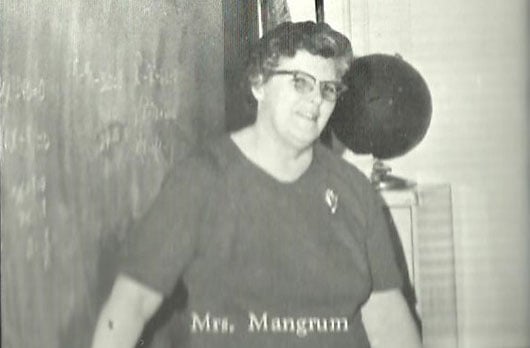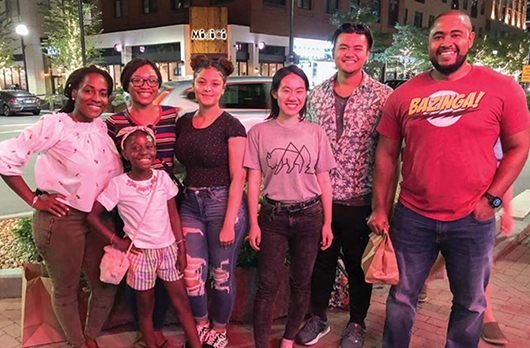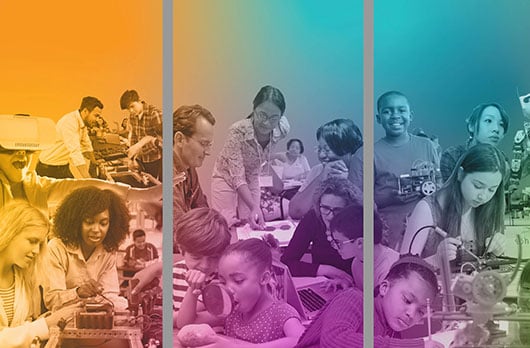TERC Blog
Autism Acceptance Month
Personal Stories from 3 TERC Families and how TERC’s Education Researchers are Broadening Meaningful STEM Experiences
During Autism Acceptance month, we want to share with you a glimpse into the experiences of three mothers who are on staff at TERC, and their children. You will also hear from a Senior Leader and Research Scientist at TERC about the clear overlaps they've seen between Autism, Computational Thinking, and STEM fields.
When you have met one autistic person, you have met one autistic person
Love, Repeat
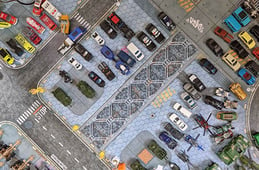
In my memory, the delivery room nurse called "He's got red hair!" before she shouted "It's a boy!" And we were handed a red-headed bundle with a chromosome deletion and autism.
My son is 16 now, a complex bundle of joy grown into a complex teen. I stumble over my words in my effort to describe him. How do I start? Autistic means different things to different people. "If you've met one autistic person, you've met one autistic person," they say. How do I balance wanting you to meet my autistic son, with wanting you to just meet my son? I want you to understand who he is, not just the label attached to him. At the same time, his autism explains him, it is him.
I want you to understand that when he hovers at the edge of a group, it is not to hover out of the way, but to hover near… so you'll do the hard work to engage him. I want you to understand that his vocalizations on the street are not meant to be alarming or weird or loud, it's just how he calms and entertains himself. "Captain, Storm Troopers on deck. Roger."
I want you to understand that it's hard, really hard, to respond for the 200th time, "Yes, we should go to Disney World; we will someday, just not right now." Understand that it's boring to play Ticket to Ride yet again. Or know it is annoying to step over the cars that are creeping across the living room.
But I want you to understand that those Matchbox cars and army men that get organized and lined up bring him so much joy. Or is it peace? It's hard to describe his world.
I want to say that my son would struggle to describe me too. He has challenges with language. But he wouldn't. He'd find the word easily. A million bucks it would be "nice." I ask him, "What word would you use to describe Mom?" And again he surprises me with more, "Nice ... and kind and awesome."
"I'll take that," I say with a smile.
In the evening, our nighttime routine has shifted only slightly over the years, like the slowest of turning aircraft carriers. It still requires this 16-year-old to line up 9 stuffed frogs in a particular order. Then I read, and he says, "More water after? You're the best mom ever." It's predictable, it's a pattern. But I love it.
Sometimes I take credit where credit is due: "You're right, I am the best mom ever." But more often than not, I respond: "You're the best boy ever." And we repeat.
This is My Super-power
As my daughter was going through her baby and toddler years, we were amazed at her development and her curiosity. She was the kind of baby that always had to sit up to look around. When she was about three, we started noticing that certain things she did were a little different from other kids. On the one hand, there were areas where her development seemed advanced for her age, especially her language. Around her fourth birthday, I realized that she had learned to read by herself and could fluently read any children’s book. I was in awe. On the other hand, there were areas where she seemed to move slower, such as her way of playing alongside others instead of with them or her difficulties with catching a ball. However, her teachers did not see these as red flags, so she simply did some occupational therapy to support her motor development.
Meanwhile, we continued researching our daughter’s abilities and difficulties and started to pinpoint autism as a potential explanation. About a year later, in pre-K, her teacher recommended an evaluation. We requested evaluating for autism, though the school psychologist was not planning on it. She could not hide her surprise when my daughter’s results came back as qualifying for the autism spectrum. That gave us some answers about her difficulties. Soon after, I talked to my daughter about her autism as I considered that it was her right to know this about herself. Though she was only five years old, this was empowering information for her.
A couple of years later, she was evaluated for her school’s gifted program, and her results showed that she is indeed gifted, with a special talent in language. That gave us some answers about her unusual abilities. We then learned about twice exceptional (or 2E) individuals, those who are both gifted and are neurodiverse or have a disability. That helped us understand my daughter a little better. It doesn’t explain who she is, because her personality — her wit, her iron will, her compassion for others, her playfulness and creativity — is much more than what a label can tell. However, it helps her parents and teachers in supporting her special combination of abilities and difficulties.
She is finishing elementary school as a star student in a year that has been anything but normal. She has weathered the pandemic with grace and a good dose of philosophy. As she gets ready to enter middle school in the fall and deal with the changes of the pre-teen years, I hope that the children and teachers in her new school will be able to see her for who she is and not her labels.
Unleashing his Voice
When you love someone with autism, your life changes in the most beautiful and unexpected ways. At 18 months of age, my son’s ability to communicate using his words and to connect and make eye contact with people was stolen at the hands of autism, taking my family on an unimaginable journey. That was 24 years ago, when advice from the medical field was to take him home, love him, and hope for the best but expect little of him. We forged our own path and sifted through the scattered suggestions of how to help our son come back into the world.
We met some of the most amazing, loving, and dedicated teachers throughout these, at times, very challenging years and we taught him at home and brought him to countless therapy sessions. Each helped him slowly come back to a more ‘present’ and calmer state, however a silent one. For years, we thought, if only he could tell us … what he thinks about, why he does this or that, how he feels, and how we can help him. I felt all along that there was a voice inside of him, desperate to be unleashed, if I could only figure out how to release it.
Finally, two years ago, I discovered a supported communication via typing program led by an experienced speech language pathologist, who, as I have never experienced before, looked at and spoke directly to my son, as if he were an equal and worthy of her attention and respect. She told him she was going to work with him to help him share his thoughts and find purpose in his life, that she knows he is intelligent and that he has a lot to say. We wholeheartedly agreed so we proceeded and life has changed forever for our son and for us.
He has answered some of our questions including how he sees, feels, hears, and navigates the sensory-complex world around him. He loves science and learning in general and wants to find love in his life. At his sixth session, he typed, “I want to thank you for believing in my intelligence” and then for the first time, “I love you mom”, a gift beyond belief.
As we continue to strive toward complete independence in his ability to communicate via typing, a long and difficult journey given his motor control struggles (skeptics be darned), I see his beauty and potential in a new way. Like every individual with autism, he is a gift with much to share. I hope that one day, the world will see, appreciate, and respect all that he and others bring to this world and his limitless potential. He is my hero!
Autism, Computational Thinking, and STEM Learning
It is the kids who often struggle in school that seem to excel in computational thinking activities.
At TERC, we strive to engage a broad range of diverse learners, including neurodiverse learners, in rich and meaningful STEM experiences. We take an asset-based approach to teaching and learning, believing that all individuals bring their own unique strengths and ideas that can contribute to interesting lines of questioning, problem solving, and experimentation. As education researchers, we work with some children with autism who are outstanding computational thinkers—seeing patterns and connections and details that most others miss. Some are artists — unleashing their creativity and innovation in ways others would never think of. And some are activists —screaming inconvenient truths from the mountain tops with disregard of the conformist tendencies that overcome most of us and make us shy away from such boldness.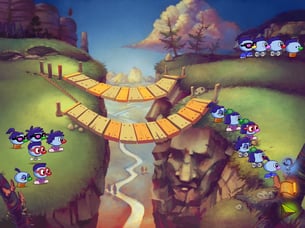 In our research, using TERC’s Computational Thinking game called Zoombinis in classes around the world, we hear the same thing repeatedly from teachers. “It is the kids who often struggle in school that seem to excel in computational thinking activities.” Teachers have told us that by becoming class leaders in the game, they became the “go-to” people for their peers. That success snowballed as they saw themselves as valuable contributors and changed their own identity in the class. While our research did not identify these children specifically with autism, we see clear overlaps between autism and Computational Thinking as well as the STEM fields in general.
In our research, using TERC’s Computational Thinking game called Zoombinis in classes around the world, we hear the same thing repeatedly from teachers. “It is the kids who often struggle in school that seem to excel in computational thinking activities.” Teachers have told us that by becoming class leaders in the game, they became the “go-to” people for their peers. That success snowballed as they saw themselves as valuable contributors and changed their own identity in the class. While our research did not identify these children specifically with autism, we see clear overlaps between autism and Computational Thinking as well as the STEM fields in general.
There is a growing body of evidence that learners with autism often demonstrate cognitive assets that are vital to STEM problem solving. Sir Simon Baron-Cohen, a lead researcher in autism in the UK, writes in his book The Pattern Seekers about the inherent systematicity of the autistic brain and how the autistic brain lends itself to innovation and invention. Steve Silberman has noted in his recent book, Neurotribes, the similarity of the behaviors of some of our greatest STEM thinkers in the past (e.g., Cavendish and Dirac) and what we now call autism. He also reports on research that may have shown higher trends of children with autism from highly intelligent and computational parents (e.g., in Silicon Valley). Companies such as Microsoft, Dell, and Ernst & Young have started hiring programs focused on people with autism because they recognize the often untapped talent in this population. While this research is young, and may be overstated or over-interpreted at times, the connection between autism and the STEM skills needed for our future workforce is compelling and worth further exploration.
In our research at TERC, we are aiming for a world where school is no longer a place that tries to “fix” a learner with autism, but rather to help them thrive — a place where their contributions are valued for what they are — not deficit, just different. For we believe that when that world exists, our big problems won’t seem so big. We will have the right people on the job ready to tackle them. And we will all be better off for it.
References
Baron-Cohen, S. (2020). The Pattern Seekers: How Autism Drives Human Invention. United States: Basic Books.
Silberman, S. (2016). Neurotribes: The Legacy of Autism and the Future of Neurodiversity. United States: Penguin Publishing Group.
Zoombinis, https://www.terc.edu/zoombinis/

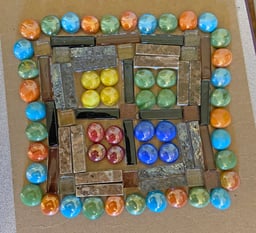
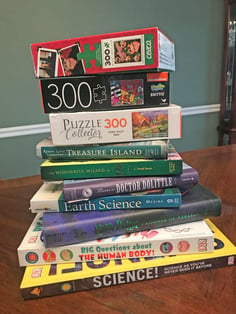
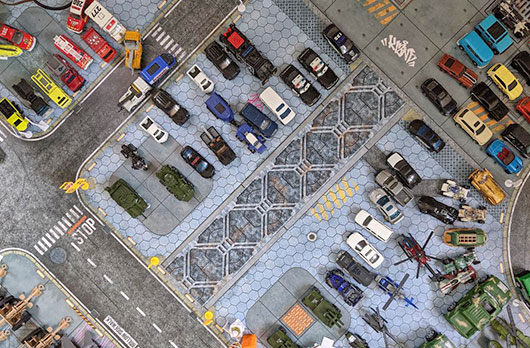




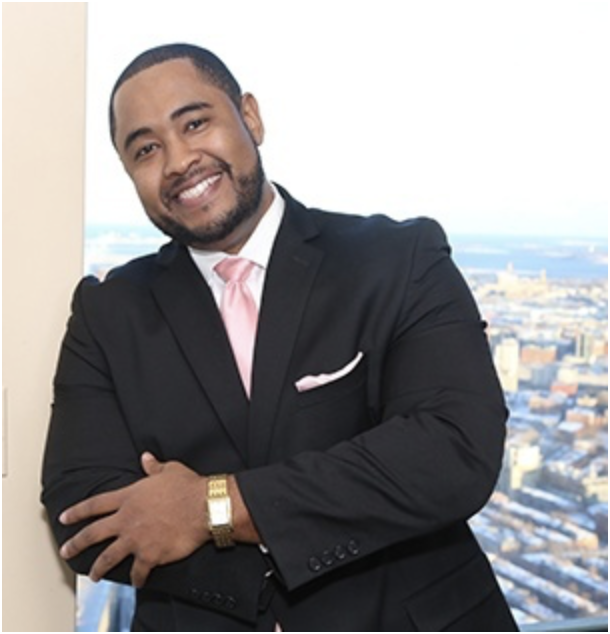
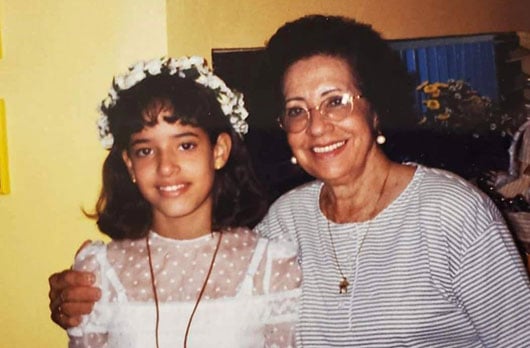
-Bonda.jpg)
